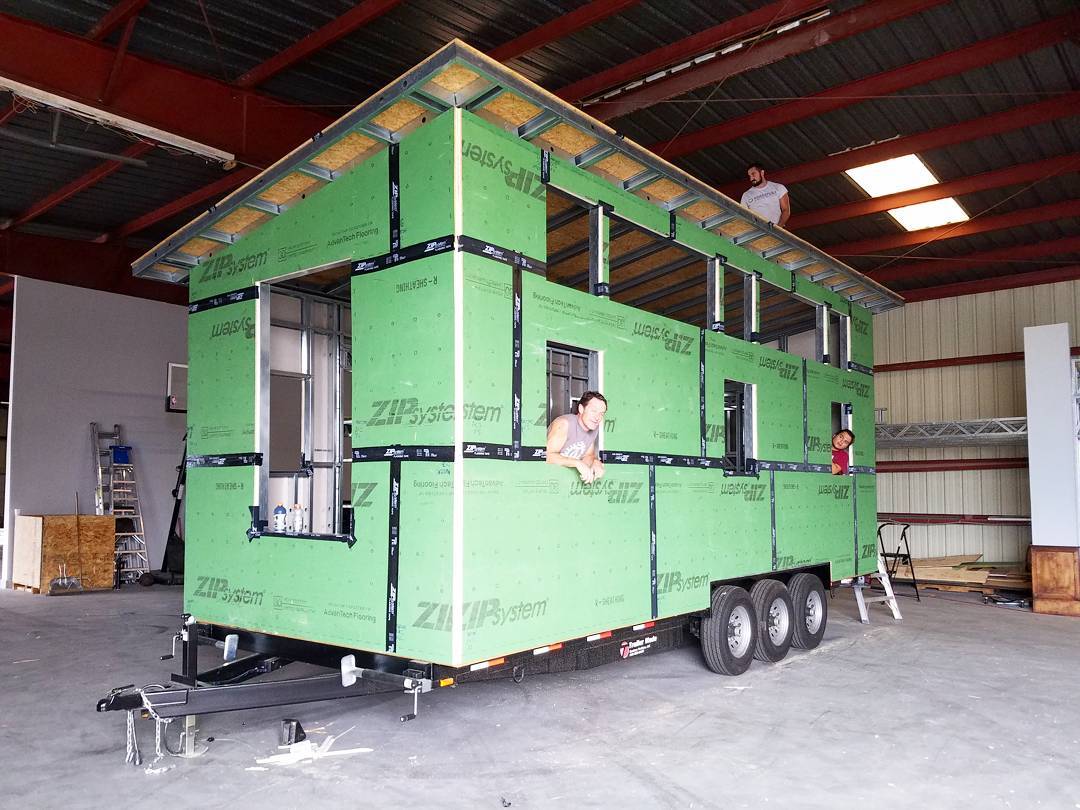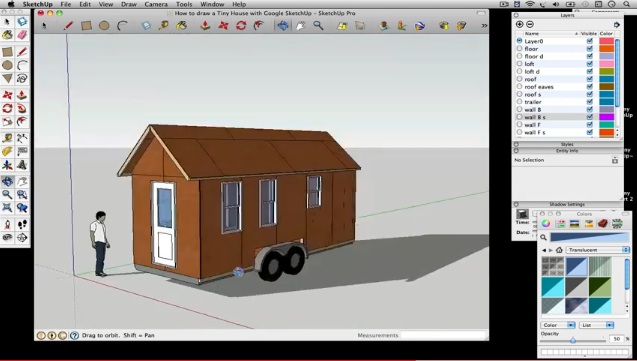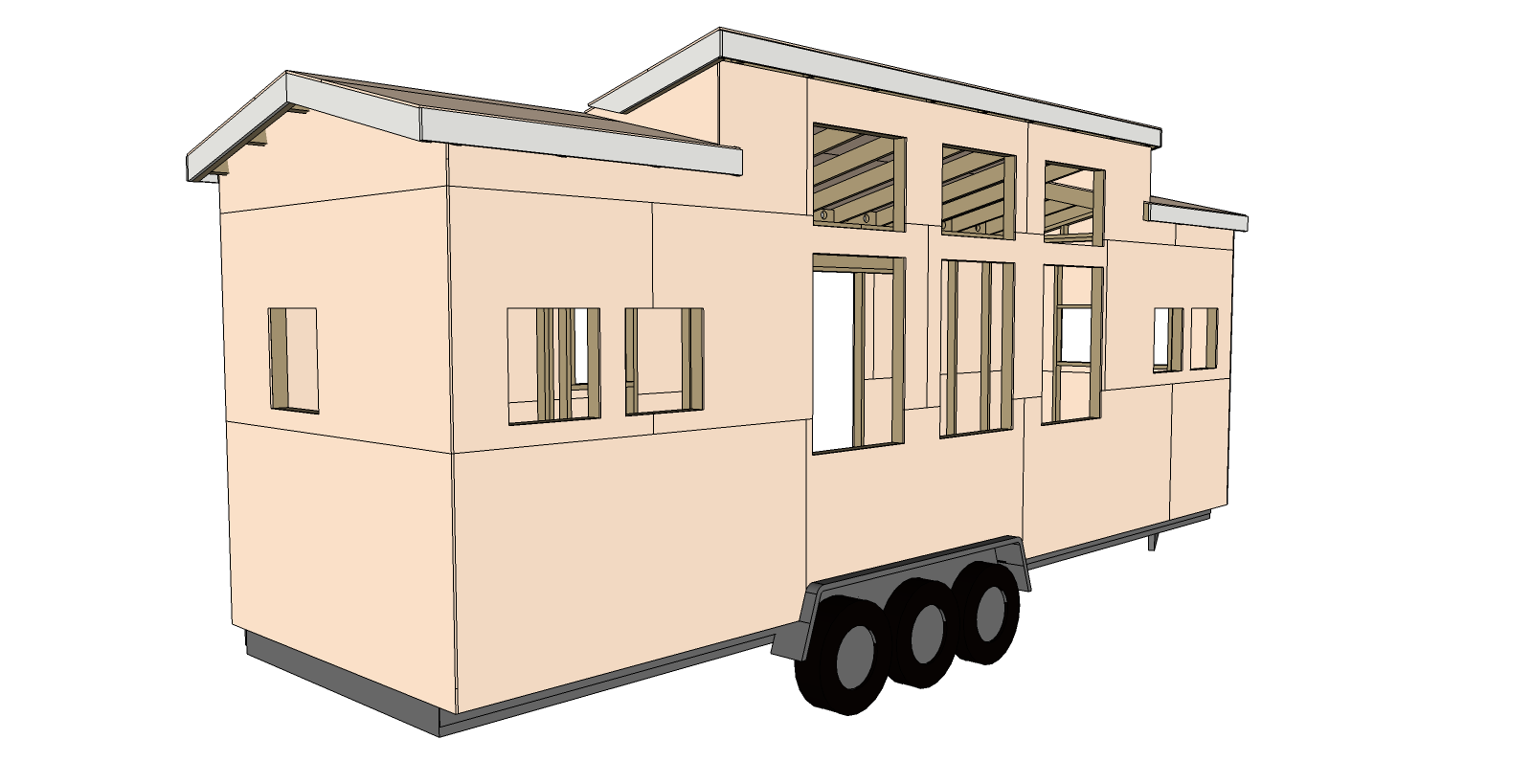How to Defeat Thermal Bridging in Tiny House Steel Framing

Steel framing typically reduces the R-value of the in-cavity insulation by as much as 50%. Wood framing reduces R-value too… but only by about 10%. This is because wood transfers heat slower than metal, but neither are good insulators.
So all framed houses, wood & steel, are subject to thermal bridging – which is heat moving through the framing, around the in-cavity insulation, and transferring to the exterior of the home. Wood framing and sheathing (plywood and OSB) slow the thermal bridging because they have a tiny bit of R-value, but heat transfer is not effectively stopped unless there’s some kind of insulating layer applied to the exterior of the house.
The best solution is to wrap the building with exterior rigid insulation that cuts off the thermal bridging, provides shear strength, and protection from air & moisture penetration. When you reduce/eliminate thermal bridging you not only save energy but you also reduce the possibility of condensation, mold, and rot.
Insulation is normally placed between framing members because there’s an cavity to fill… but it’s not the best place for insulation. The best place is outside the framing, like wrapping the house in an insulated shell.
Joe Lstiburek of Building Science Corporation calls this the “perfect wall”, where all of the insulation is on the exterior. But the perfect wall would be super thick, which would not work well for tiny houses.
Luckily this isn’t a new problem, so there are many products that help defeat thermal bridging that double as sheathing.
ZIP System® R-Sheathing is an excellent choice. It combines structural sheathing, a vapor barrier, an air barrier, and insulation to defeat thermal bridging and seal up the house all in one system. While it might be a bit more expensive than plywood, it’s a one-stop-shop solution for enclosing the house. It’s also nailable so you can put your siding of choice over it without needing to nail through to the framing underneath.
ZIP System® R-Sheathing comes in different thicknesses which provide more insulation as the thickness increases. Select the thicker variety for the harsher climates.
Another option is the ultralight R3 Thermasheath SI Walls. It’s much lighter and still provides the structural sealing, a vapor barrier, air barrier, and thermal break – but it isn’t nailable so you would need to nail through to the framing underneath to attach siding.
Another option would be to use built-up layers of plywood, foam board insulation, and house wrap. This would be more labor intensive and thicker – so for tiny house construction the small savings you might see over the engineered all-in-one products is probably not worth it since we’ve not talking about that much material anyway.
If I were building a steel framed house that I planned to tow a lot, I’d choose the ultralight Thermasheath SI Wall system. If weight wasn’t a top priority I would definitely choose the ZIP System.
Photo by Volstrukt.




